7 Steps to Birdscaping Your Garden. Did you know nearly a third of U.S. birds need our help due to losing homes and facing other big dangers1? This important fact shows why making bird-friendly spaces in our gardens is so important. Doug Tallamy, a famous writer, believes that gardeners are now key players in looking after wildlife. He says that making our gardens welcoming to birds brings quick and clear benefits.
Making your garden a haven for birds does more than just make it look nice. It tackles the big issues of habitat loss, breaking up of habitats, and their worsening condition2. These problems are why many birds are having a tough time2. By inviting birds into your garden, you create a little paradise in the midst of city growth2. Think about the happiness you’ll feel watching birds from your own backyard. You’ll know you’re helping local birds thrive.
Key Takeaways
- Habitat loss is a big reason for birds having a hard time2
- Birdscaping makes a haven for birds, even with cities growing around them2
- Once you add things for birds, you can see good things happen right away
- Making your garden bird-friendly is crucial for helping manage wildlife in our country2
- Gardening is not just a hobby; it’s a way we can all help save birds1
Understanding the Importance of a Birdscaping Garden
People changing the land has led to fewer birds around. Making gardens bird-friendly gives them a safe place to live. These gardens give birds like American Robins and Pine Grosbeaks food and shelter during bad weather3.
Laura Erickson, from Duluth, Minnesota, talks about the good of native plants for birds. These plants help birds live and have babies3. Starting small gardening projects can make your yard better for birds and look nice4.
Most land in the US is owned by people, not set aside for animals. Our gardens can become small safe spots for birds. Adding different plants helps birds find food like insects and seeds4.
Keeping some old wood around is good for woodpeckers to find food3. Letting grass grow tall in some places makes the garden welcoming for birds4.
Water spots, like birdbaths, attract birds. Planting flowers near them makes the garden pretty and good for birds4. Small changes can make your yard a place where birds thrive, helping them out a lot.
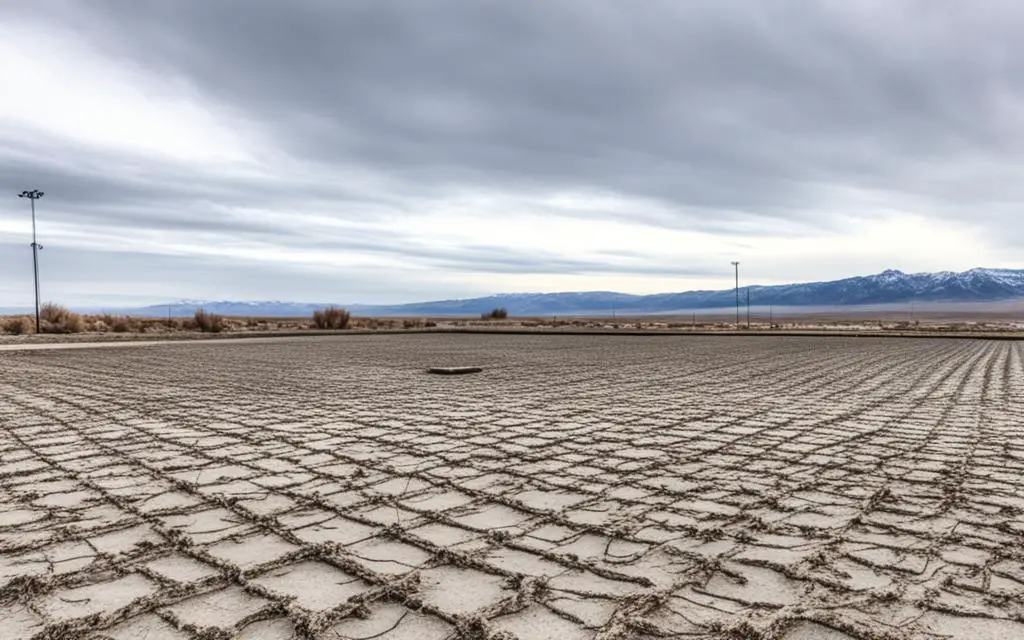
Key Elements to Include in Your Birdscaping Garden
To create a thriving birdscaping garden, you need a few key pieces. Adding native plants, water spots, and homes or nesting spots will make your garden welcoming to birds.
Native Plants for Birds
Native plants are super important in any birdscaping garden. They feed the local food web and give birds nest materials. Butterflies also lay eggs on them, helping birds to find plenty of food5. These plants don’t need much care after the first year and are good for the climate5. Many birds use native plants to raise their young and find shelter6. Getting 75% of your garden to be native plants can bring more birds7.
Water Features
Water spots are key for a bird-friendly garden. Birds need clean water every day for drinking and bathing. So, having a birdbath you clean often is a must5. Water gardens with lots of plants offer birds both water and hiding spots6. In cold areas, a heated birdbath means birds can find water all year round5. Water that moves can bring even more kinds of birds to your garden7.
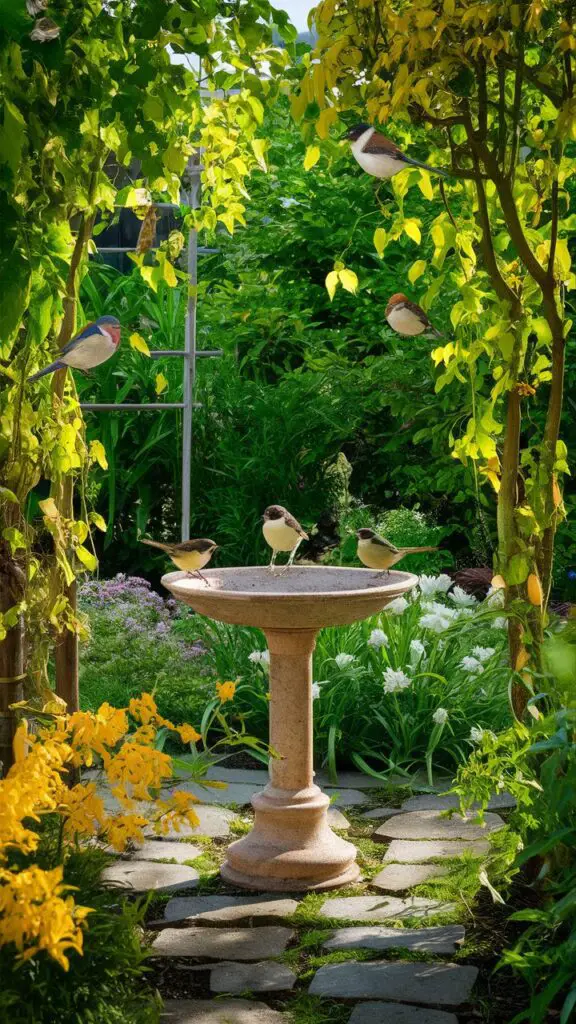
Birdhouses and Nesting Sites
Putting up birdhouses and places for nesting helps birds find safe spots. Cover from plants, trees, and boxes is key for them to escape danger5. These spots protect them from bad weather and predators. Evergreen trees are great since they give both food and shelter all year5. A diverse garden full of different plants and homes for birds will thrive6.
How to Attract Birds to Your Garden
To start a bird-friendly garden, learn the best *tips for birdscaping*. These tips can really help in *attracting diverse bird species*. A great way is to have different feeders for various birds. This lessens competition and lets more species come to your garden. Choose feeders like tube ones, suet, and platform versions to attract different birds8.
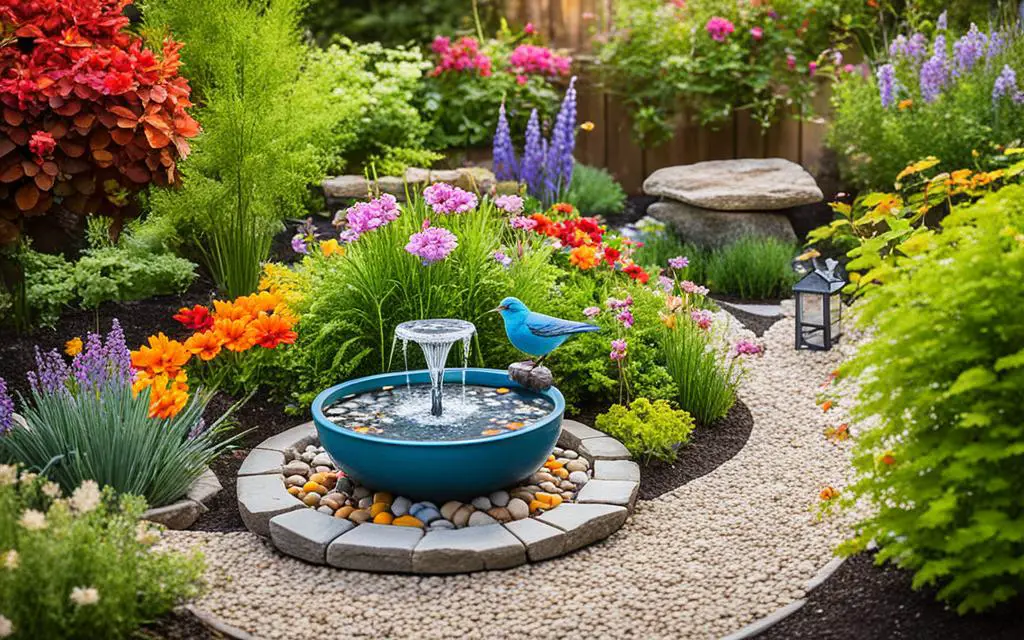
Adding a mix of seeds and berries, like sunflower seeds and millet, is another good move. These are very good for the birds. Birdbaths are also important as they give birds water to drink and bathe in. Heated birdbaths are super inviting when it’s cold. Remember to replace the water often to keep birds healthy and disease-free.
Add bright colors to your garden with flowers or decorations to catch birds’ eyes. Native plants, especially oak and pine trees, are very good for *birdscaping*. Oaks support many butterflies and moths, more than non-native trees. They also attract birds like Blue jays and sparrows8.
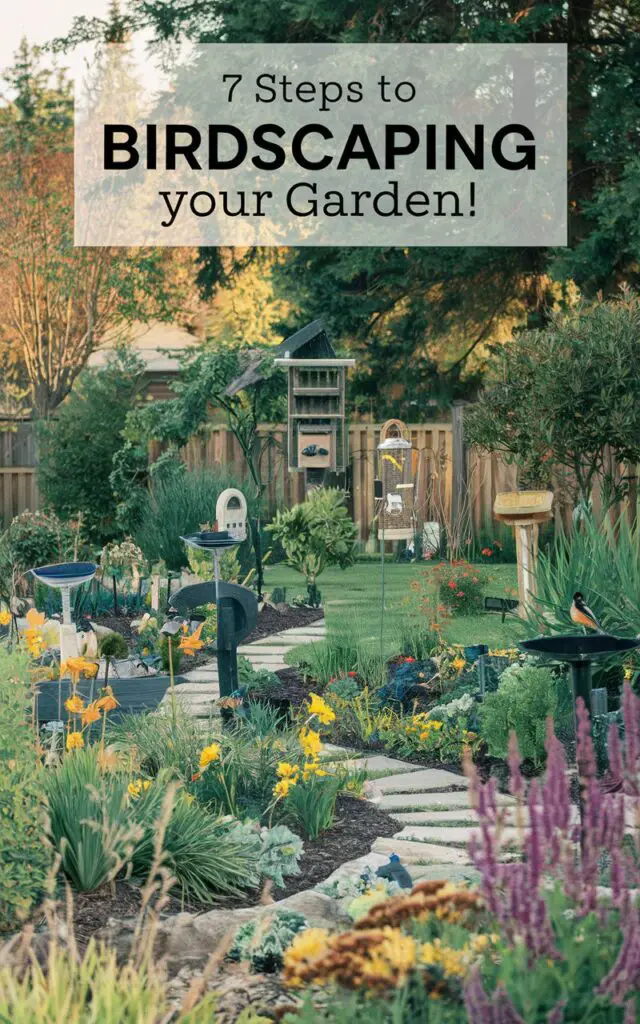
Putting in things like birdbaths, fountains, and ponds makes your garden more appealing. Birdhouses and nesting spots are key for birds like woodpeckers and robins8. All these steps together make your garden a perfect place for many birds.
Managing Your Birdscaping Yes Garden Sustainably
To have a bird-friendly garden, use green habits. Try not to use harmful chemicals. This is better for the earth.
Doing this makes a great place for animals without harm. Cut down on chemicals and let natural animal helpers do their work. This keeps your garden balanced.
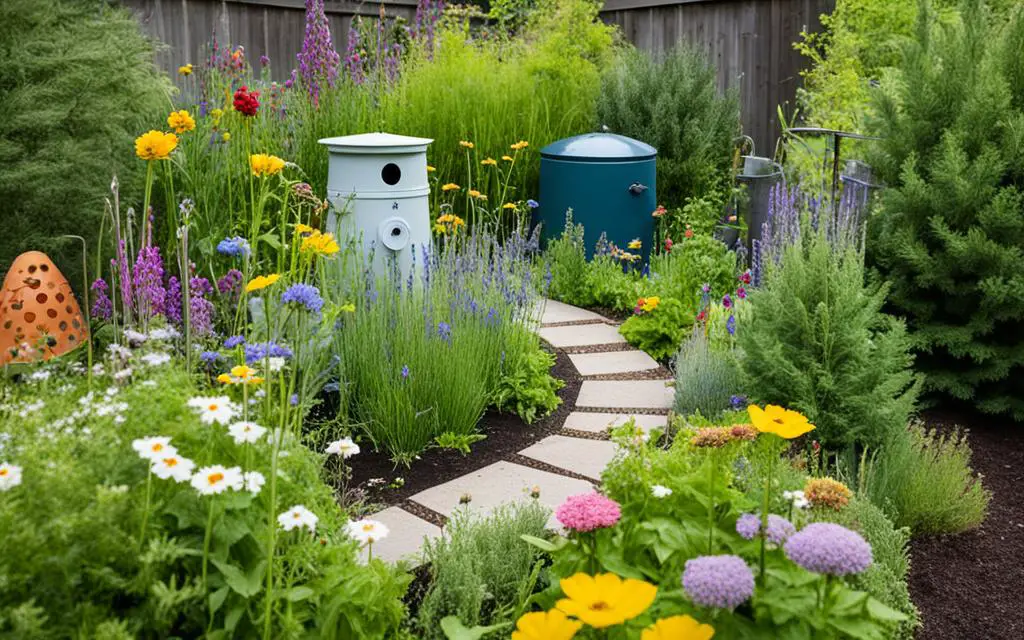
Reducing Chemical Use
Use fewer chemicals to keep your garden safe. This also protects nature’s network. Over 40 million acres of nature have changed because of lawns9.
Try adding native plants each year to help. This makes a good home for birds and insects9. Everything in your garden will grow better together.
Encouraging Natural Predators
It’s good to have animals that eat pests in your garden. Birds, bats, and helpful insects are perfect. They keep the bug numbers down.
A garden full of different plants needs less work. It gives animals what they need to live10. Keep plants that make lots of seeds and berries10. They feed animals all year.
Are you needing an awesome bird bath for your garden? Be sure to check out this bird bath!
Conclusion
Birdscaping makes your garden look nice and helps birds live. It’s also about gardening in a way that’s good for the earth. Adding native plants, fresh water, birdhouses, and feeders makes a friendly place for birds. It’s important to have lots of trees and shrubs because birds love them5. Using plants from your area helps your garden handle the weather better and saves water5.
Now, there are three billion fewer birds in North America than in 19705. This big drop shows we need to make our gardens safe for birds. Giving birds the right food, water, and places to live helps our local nature. Birds need clean water every day and feeders that are kept clean. They also like gardens with colorful plants, no matter the garden’s size5.
When you work on birdscaping, you make your garden better and help save our natural world. Making a garden that birds can live in means you’re gardening in a way that’s good for the planet. This helps your garden and the whole world be a better place for birds to live.
Source Links
- https://www.ecosystemgardening.com/ultimate-guide-to-birdscaping-your-garden.html
- https://www.ecosystemgardening.com/7-steps-to-birdscaping-your-garden.html
- https://www.hachettebookgroup.com/storey/birdscaping-your-backyard/
- https://www.birdingwire.com/releases/e799bc02-3c2a-4a3b-be0d-8da4bf84fa37
- https://www.comfortspringstation.com/2023/07/18/how-to-attract-birds/
- https://rockledgegardens.com/the-bird-is-the-word-birdscaping-basics-for-every-gardener/
- https://www.boston.com/real-estate/gardening/2018/10/05/attract-birds-yard-birdscaping/
- https://gwinnettmastergardeners.com/2009/12/birdscaping-in-the-home-garden.html
- https://monkgardens.org/landscape-consulting/
- http://wvdnr.gov/wp-content/uploads/2021/05/wildyardsbook03-1.pdf

My name is Shane Warren, the author behind Your Bird Buddy – your ultimate guide to the wonderful world of birds! Unleash your inner avian explorer as we delve into a vibrant library of knowledge dedicated to all things feathered. From learning about diverse bird species from across the globe to understanding their captivating habitats and behaviors, I’m here to fuel your passion for these magnificent creatures. Not only that, but I also provide valuable insights on being a responsible and informed pet bird owner. Join our vibrant community and let’s celebrate the feathered wonders of the world together – one chirp at a time. And be sure to join our Your Bird Buddy Community over on Facebook!

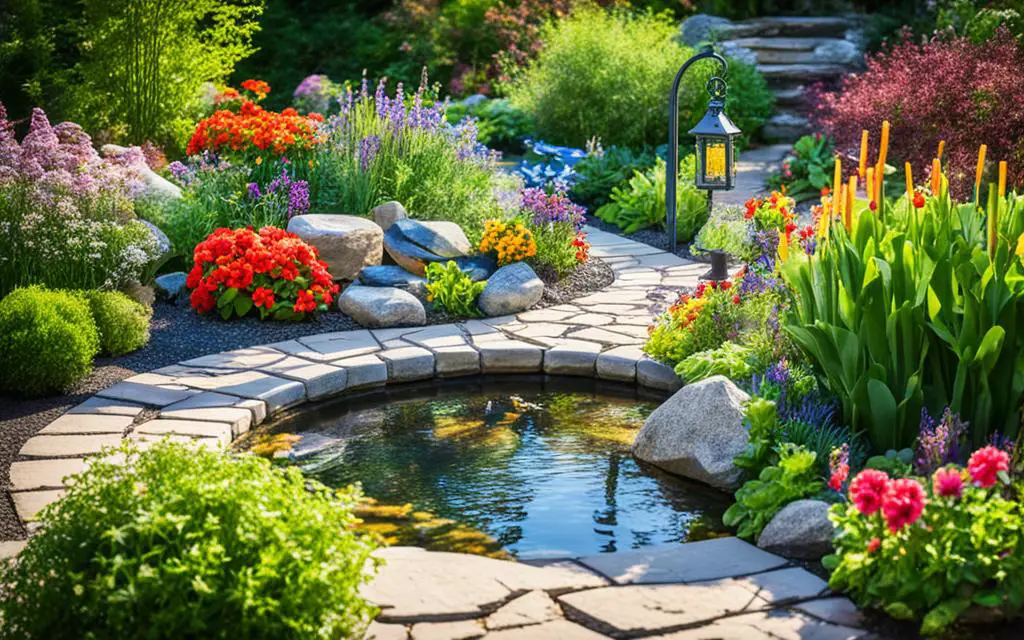
Comments are closed